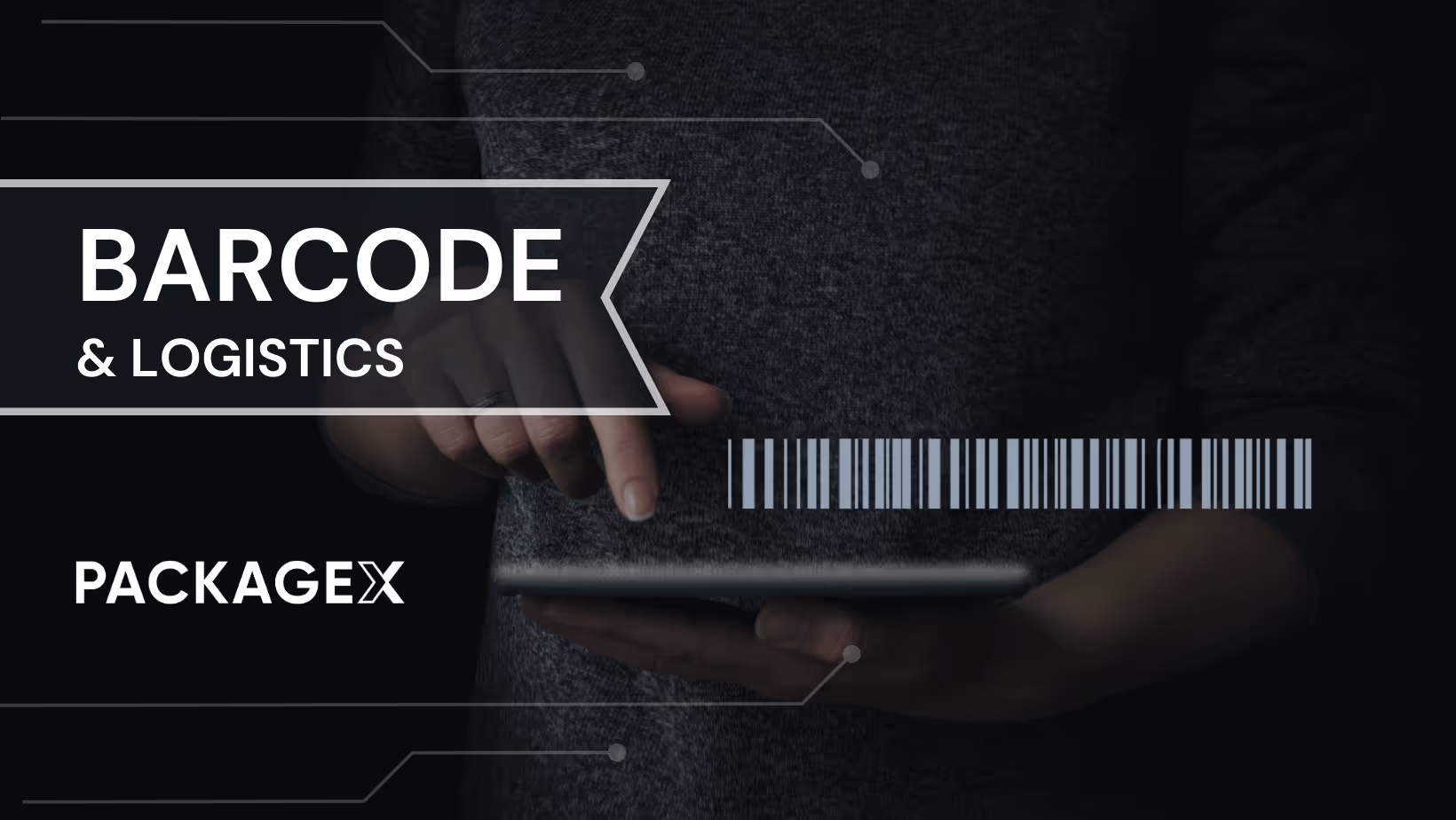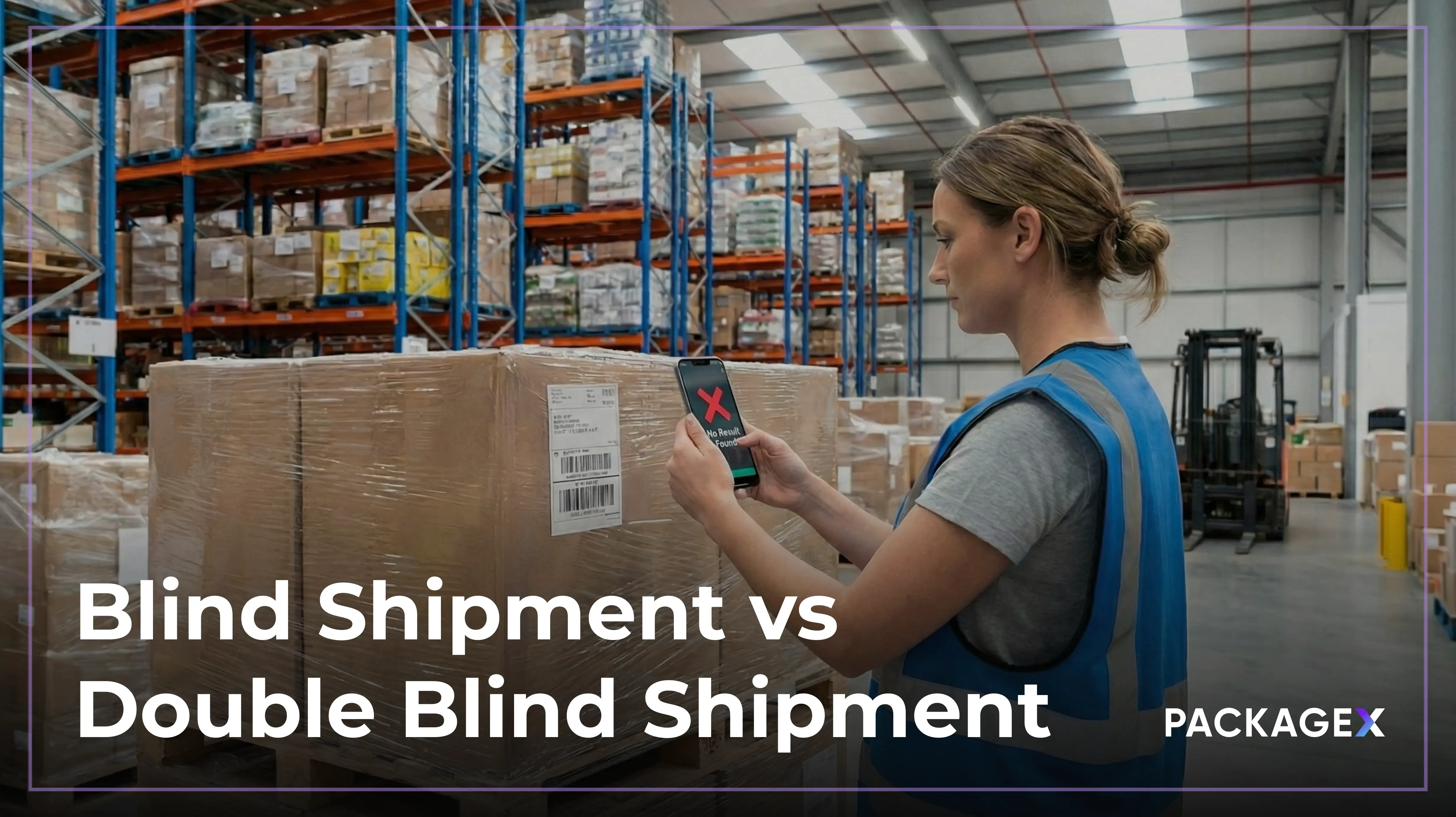Barcodes are the stripes of varying widths printed on products and packages, representing data by varying the spacings and width of parallel lines. They are a key technology in logistics, critical for managing inventory, tracking shipments, and ensuring the accuracy of deliveries. Barcodes and logistics together drive efficiency and scalability in the global movement of goods.
In this article, we delve into the role of barcodes in logistics operations and how they reduce errors, speed up processes, and improve inventory management to expedite trade and commerce.
The evolution of QR codes in logistics
The early adoption of barcodes
The journey of barcodes in logistics began in the 1970s, but it wasn't until the subsequent decades that their full potential was realized in the industry. Initially used to manage retail inventories, barcodes quickly became valuable for tracking shipments. The adoption of Universal Product Codes (UPC) and the International Article Number (EAN) allowed for a standardized system of identification that streamlined global trade processes.
Traditional methods of barcode scanning
To work, barcodes required scanning devices that employed various techniques and hardware for decoding and capturing barcode information. Two primary methods prevail in this landscape: laser-based scanners and image-based scanners.
Laser-based scanners
Laser scanners are the more conventional option. They utilize a laser beam to read the barcode by reflecting light off the black and white bars of the code. These scanners typically feature a single line of laser light that sweeps across the barcode, detecting the variation in reflected light to interpret the encoded information. They are adept at scanning linear barcodes and are often employed in retail environments due to their quick scanning capabilities.
Image-based scanners
Image-based scanners, on the other hand, leverage a different technology. They capture an image of the entire barcode using a built-in camera or imaging sensor. Advanced algorithms within the scanner then process this image to decipher the barcode data. This method accommodates various barcode types, including 2D barcodes like QR codes, and offers more versatility in scanning different surfaces, damaged, or poorly printed barcodes.
Modern applications with QR codes in logistics
QR codes emerged as a sophisticated evolution of barcodes, capable of storing more information and being scanned from any direction, which increased their utility in logistics. The introduction of smartphones and tablets equipped with cameras has made scanning these codes more accessible and flexible. Logistics companies have adapted by using these mobile devices to manage inventory and execute shipping and receiving operations, eliminating the need for bulky, specialized barcode scanners.
Here are some modern applications that barcodes, QR codes, and mobile scanners support:
- Inventory management: By scanning barcodes with automated scanning devices, logistics operators can instantly record stock levels, reduce the chance of human error, and enable real-time inventory updates. This is especially crucial for just-in-time inventory systems, where accuracy and timing are essential.
- Shipment tracking: Scannable codes transform the tracking of shipments, providing live updates as goods move through the supply chain. These updates are crucial for logistics providers and customers alike, enhancing transparency and accountability in delivery services.
- Sorting and routing: Automated sorting systems use barcodes and QR codes to direct packages through distribution centers. This technology streamlines the process by quickly determining the destination of each package, improving the speed and reliability of package sorting operations.
Components of barcodes in logistics
Component #1: Standardization
The efficacy of barcodes and QR codes in global logistics is deeply rooted in standardization, with organizations like GS1 providing a series of guidelines that ensure these codes meet international standards. This uniformity allows for interoperability, enabling different devices across the globe to scan and interpret barcodes and QR codes consistently.
The efficiency of standardized codes accelerates the scanning process, minimizes errors, and facilitates quick data entry. As businesses grow, standardized barcodes and QR codes enable scalability, allowing them to integrate with systems in new markets without extensive reconfiguration.
Component #2: Mobile scanning technology
The advancement of mobile technology has transformed the logistics sector, making barcode and QR code scanning more accessible and cost-effective.
Modern smartphones and tablets, equipped with high-resolution cameras, decode barcodes and QR codes quickly and accurately. These devices offer versatility by combining the capabilities of scanning, data analysis, communication, and GPS tracking into one tool. Moreover, the ease of use afforded by the user-friendly interfaces on these devices shortens the training period and simplifies the adoption process.
Companies with integrated barcoding systems that enable users to scan barcodes rather than type numbers are commonly achieving 99 percent data accuracy.
Component #3: Data management systems
Scanning barcodes and QR codes is a critical first step in the data capture process within logistics systems.
The information gleaned from these scans is channeled into data management systems, which serve as the operational nerve centers for logistics operations. They monitor inventory with real-time updates that enable swift responses to stock changes. Shipment tracking also becomes more transparent and provides visibility of an item's journey from the warehouse to the customer.
Component #4: Integration with other technologies
Barcodes and QR codes are often integrated with RFID and IoT technologies to create a comprehensive tracking system that enhances the reliability of data.
RFID tags provide a secondary verification method that augments the information from barcodes. When paired with IoT devices, barcodes and QR codes can trigger the collection and logging of detailed information, offering a granular view of the supply chain. This integrated approach to logistics solutions allows for consolidated data from multiple sources, granting stakeholders a wide-ranging view of their operations.
Real-world examples of barcodes in logistics
Scandit enables BYOD grocery scanning for Shipt contractors
In response to a surge in demand during the pandemic, Shipt, a delivery company specializing in groceries and essential goods, swiftly adapted its operations with Scandit's Barcode Scanner SDK. Facing a threefold increase in orders due to customers avoiding in-store shopping, Shipt needed a scalable solution to accommodate fluctuating demand.
The key lay in enabling their workforce, composed of new and temporary contractors, to perform high-speed and accurate barcode scanning on personal smartphones, or their “bring-your-own-devices” (BYODs). Scandit's solution became instrumental in this transition, ensuring swift scalability, superior user experience, and minimal training requirements for contactless order picking.
The scanning technology not only facilitated rapid scaling by integrating seamlessly into the existing shopper app but also empowered independent contractors to perform diverse workflows, from order picking to proof of delivery on their smartphones.
Amazon uses mobile barcode scanners for efficient warehousing
Amazon's sophisticated use of mobile barcode scanners in its warehouse operations exemplifies the company's innovative approach to inventory management, a cornerstone of its success as the world's largest online retailer.
In one of their colossal distribution centers, workers use handheld scanners to meticulously track inventory. On a regular day, the center processes over 1,200 tons of items, with around 100 delivery trucks docking to unload goods that are promptly checked, sorted, and scanned into Amazon's system.
These barcode scanners are pivotal, guiding workers to the most efficient route through the seemingly chaotic warehouse layout to pick and process orders, significantly enhancing speed and efficiency in fulfilling customer demands.
PackageX uses barcodes to digitize and automate logistics
At PackageX, we use barcode and QR code technology — along with our OCR (Optical Character Recognition) API — to revolutionize package handling and mailroom operations.
The technology streamlines the process of receiving, sorting, and managing packages by leveraging the power of machine learning and computer vision. When a package arrives, the OCR API quickly scans and reads the information encoded in the barcode or QR code on the package label.
The OCR technology does not solely rely on traditional barcodes or QR codes; it can also interpret handwritten and printed text with high accuracy. This capability is crucial in logistics, where package labels can vary in quality or clarity.
Once the system captures the data, it digitizes and uploads it to the cloud, where it can be accessed in real-time from any device. This process significantly reduces the possibility of human error, as manual data entry is minimized.
Our use of barcodes and QR codes extends beyond mere identification; it enables smart notifications and accountability. For instance, recipients can be automatically alerted when their packages arrive, and the system keeps a digital log, creating an audit trail that enhances security and traceability.
The business case for scanning technologies in logistics
Today's barcodes are highly reliable, providing a simple and cost-effective method for tracking items. However, QR codes elevate this efficiency to new heights with their ability to store more information and their ease of use with mobile devices. Computer vision technology further enhances logistics operations by enabling systems to recognize and process items without the need for a physical code at all.
Together, these technologies offer comprehensive solutions that streamline inventory management, enhance real-time tracking, and facilitate data-driven decision-making.
Considerations for integrating scanning technologies
The integration of advanced scanning technologies in logistics is important, but it's crucial to assess their alignment with your business objectives. To do so, consider the following questions.
What are some common challenges associated with barcode scanning?
While barcode scanning has revolutionized logistics, it isn't without its challenges. Several issues persist, impacting operational efficiency and hindering seamless processes:
- Hardware limitations and compatibility: One of the significant challenges lies in the hardware itself. Many systems are proprietary, vendor-locked, or incompatible with certain software. This limitation often results in logistical headaches when integrating or upgrading systems, as compatibility issues can arise between barcode scanners and the software they need to communicate with.
- Vendor lock-in: Another hurdle in the barcode scanning realm is vendor lock-in. Some companies find themselves tied to a specific vendor due to proprietary technology or contracts. This dependency restricts flexibility in choosing hardware or software, making it challenging to adapt to evolving business needs or technological advancements.
- Data accuracy and reliability: Barcode scanning heavily relies on the accuracy and readability of the codes. Damaged, poorly printed, or dirty barcodes can lead to misreads or failures in capturing accurate data, causing delays and errors in logistics processes.
Is your tracking and inventory management keeping up with the pace?
Barcode scanning is fast, but QR codes can contain more data and be scanned from any angle, which speeds up processing times. Computer vision can identify products without barcodes, cutting down the time even further.
Are you leveraging the full potential of your data?
While barcodes are effective for tracking, QR codes can store a vast array of information, from product details to handling instructions, all accessible with a quick scan. Computer vision goes a step further by analyzing the physical characteristics of packages, making it possible to automate sorting without barcodes.
Do you need to improve efficiency and accuracy in your logistics operations?
The manual scanning of barcodes can lead to bottlenecks. QR codes and computer vision allow for bulk scanning and instant recognition, which can significantly reduce errors and increase throughput.
In conclusion, while barcodes are still relevant, adopting QR codes and computer vision can lead to significant gains in efficiency, accuracy, and data management. As you consider integrating these technologies into your logistics processes, focus on how they can enhance your operations and provide a competitive edge.
{{returns-webinar}}
Getting started with barcodes and other scanning technologies
If you're ready to integrate scanning technologies into your logistics workflow, follow these steps:
Step 1: System evaluation
Analyze your current barcode system thoroughly. Assess the types of barcodes, scanning devices, and decoding software/SDKs in use. Evaluate the system's efficiency and accuracy. Verify its compatibility with different barcode symbologies, and assess its adaptability to newer ones.
Explore integrating QR codes for enhanced data encoding and error correction, along with the potential implementation of computer vision to recognize and interpret barcodes without conventional scanners.
Step 2: Integration objectives
Define precise goals for QR code and computer vision integration. Determine if the aim is to expedite scanning, improve data accuracy, or minimize manual errors. Set measurable targets such as increased scan speed or enhanced recognition accuracy.
Outline compatibility requirements for new barcode symbologies, specifying the technical parameters necessary for seamless decoding using mobile devices.
Step 3: Technology selection
Research advanced scanning technology platforms aligning with integration goals. Assess open-source barcode scanning tools and SDKs for compatibility and their ability to decode various barcode types, including newer symbologies.
Consider enterprise-grade solutions with robust support and scalability. Ensure chosen technology provides necessary APIs, libraries, or SDKs for decoding diverse barcode symbologies via mobile devices. Evaluate features like real-time decoding and adaptability to evolving industry standards.
By evaluating, setting clear objectives, and selecting technology capable of decoding diverse barcode symbologies via mobile devices, you can strategically integrate QR codes and computer vision, improving logistics operations' efficiency and accuracy in the modern supply chain landscape.




